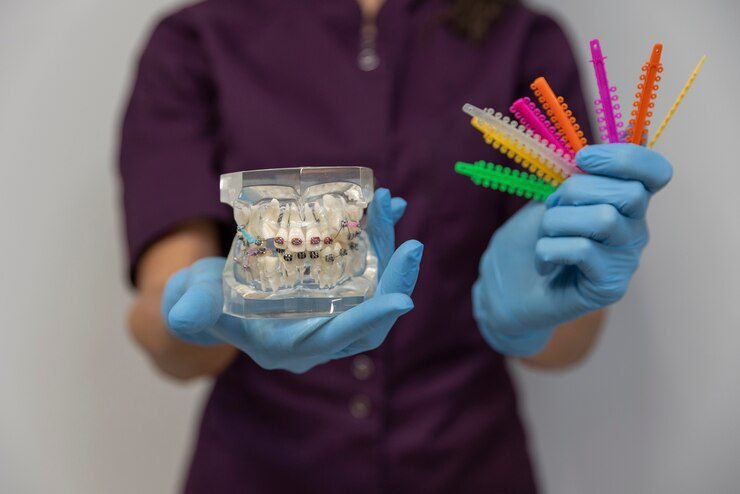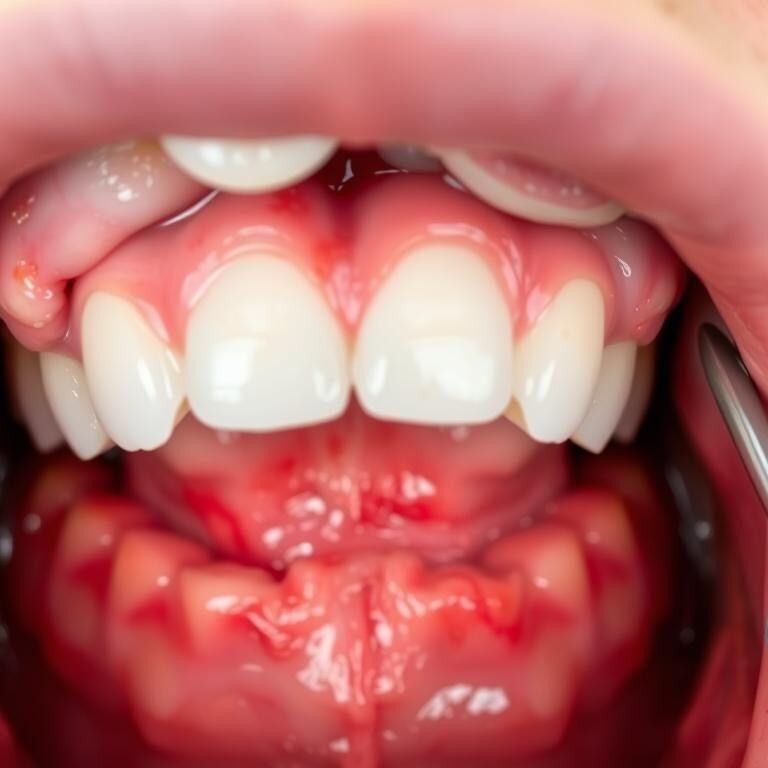Table of Contents
Understanding the Financial Investment in Orthodontic Treatment
Orthodontic treatment is a valuable investment in both the aesthetics and functionality of a person’s smile. It is a commitment that not only enhances oral health but also boosts confidence and self-esteem. However, it is essential to understand the financial implications of orthodontic treatment before embarking on this journey.
The cost of orthodontic treatment varies depending on several factors such as the type of braces, the severity of the malocclusion, and the duration of the treatment. On average, traditional metal braces can range from $3,000 to $7,000, while more discreet options like ceramic braces or clear aligners may cost between $4,000 and $8,000. The complexity of the case and the geographical location of the orthodontist can also contribute to cost differences.
Despite the initial investment, orthodontic treatment can provide long-term benefits, preventing further dental issues and reducing the need for additional dental work in the future. To ensure a full understanding of the financial investment, it is advisable to consult with an orthodontist who can provide a personalized treatment plan and discuss potential payment options. By exploring avenues such as insurance coverage, financing plans, and flexible spending accounts, individuals can make an informed decision that suits their budget while allowing them to obtain the smile of their dreams.

Evaluating the Different Types of Braces and Their Associated Costs
When evaluating the different types of braces, it is important to consider both the effectiveness of the treatment and the associated costs. Traditional metal braces are the most common type and have a proven track record of success in correcting various orthodontic issues. They are also typically the most affordable option. Ceramic braces are another popular choice, as they are less noticeable than metal braces. However, they can be more expensive due to the higher cost of materials.
For those looking for a more discreet option, lingual braces are attached to the back of the teeth, making them virtually invisible. While they offer a cosmetic advantage, they tend to be more expensive than traditional braces. Additionally, clear aligners, such as Invisalign, have gained popularity in recent years. These removable trays are custom-made and can provide a more comfortable and aesthetically pleasing alternative to traditional braces. However, they can be more expensive and may not be suitable for severe orthodontic issues.
It is essential to consult with an orthodontist to determine which type of braces is best suited for your specific needs. They will be able to provide you with a comprehensive evaluation and detailed cost breakdown of each option.
Factors That Influence the Cost of Braces: An In-Depth Analysis
The cost of braces can vary significantly depending on several factors. One of the primary factors that influence the cost is the type of braces chosen. Traditional metal braces tend to be the most affordable option, while ceramic braces and lingual braces are usually more expensive. Additionally, clear aligners such as Invisalign may come with a higher price tag compared to traditional braces.
Another important factor to consider is the severity of the orthodontic issue. Cases that require more extensive treatment and correction may result in higher costs. For instance, individuals with severe misalignment or overcrowding may need additional appliances or longer treatment periods, which can increase the overall cost.
It is also worth noting that geographical location can play a role in the cost of braces. Prices can vary from one region to another due to differences in living costs, orthodontist fees, and market competition. For example, getting braces in a metropolitan area may be more expensive compared to a suburban or rural location.
Other factors that can influence the cost of braces include the reputation and experience of the orthodontist, the complexity of the treatment plan, additional procedures like tooth extractions or surgeries, and any necessary pre or post-treatment care. It is crucial for individuals to consult with their orthodontist to obtain an accurate estimate, as each case is unique and may require different approaches.

Exploring Insurance Coverage and Orthodontic Benefits
Insurance coverage and orthodontic benefits can play a crucial role in making orthodontic treatment more affordable for individuals and families. Many dental insurance plans provide coverage for orthodontic treatment, especially for children under the age of 18. While the specifics of coverage may vary from one plan to another, it is common for insurance plans to cover a portion of the cost of braces, typically ranging from 50% to 80%. Some insurance plans may also cover other orthodontic appliances, such as retainers. It is important to review the details of your insurance plan to understand the extent of coverage for orthodontic treatment.
When considering insurance coverage for orthodontic treatment, it is essential to keep in mind that there may be certain limitations and restrictions. For example, insurance plans may have waiting periods before orthodontic coverage becomes available, and they may also require pre-authorization or a referral from a dentist or orthodontist. Additionally, some insurance plans may have a maximum coverage limit or a lifetime maximum for orthodontic treatment expenses. Understanding these factors can help you make informed decisions and plan your orthodontic treatment accordingly.
In conclusion, exploring your insurance coverage and orthodontic benefits is an important step in affording braces or other orthodontic treatment. By understanding the coverage offered by your insurance plan, you can better plan for the financial aspects of orthodontic treatment and make informed decisions about the best course of action for you or your child.
Navigating Flexible Spending Accounts and Health Savings Accounts for Braces
Flexible Spending Accounts (FSAs) and Health Savings Accounts (HSAs) present viable options for individuals seeking to manage the financial costs of orthodontic treatment. FSAs are employer-provided benefit plans that allow employees to set aside pre-tax dollars for eligible medical expenses, including orthodontic treatments. On the other hand, HSAs are savings accounts that individuals can open if they have a high-deductible health insurance plan. Contributions made to an HSA are tax-deductible and can be used to cover various medical expenses, including orthodontic treatment.
Both FSAs and HSAs offer the advantage of using pre-tax dollars to pay for orthodontic treatment, reducing the financial burden for individuals and families. However, it is important to note that there are specific rules and limitations associated with these accounts. For FSAs, there may be a maximum contribution limit set by the employer, and funds not used within a specified time period usually expire. In contrast, HSA funds can roll over from year to year, allowing individuals to accumulate savings for future orthodontic needs. Before utilizing either of these accounts, it is crucial to familiarize oneself with the specific guidelines and restrictions to ensure compliance and maximize the utility of the funds.

Government Assistance Programs for Orthodontic Treatment
Government assistance programs can provide much-needed support for individuals who require orthodontic treatment but are unable to afford the high costs associated with it. These programs aim to ensure that everyone has access to necessary dental care, including orthodontics, regardless of their financial situation.
One such program is Medicaid, a federal and state-funded program that provides healthcare coverage for low-income individuals and families. While coverage varies from state to state, Medicaid typically covers orthodontic treatment for children who meet specific criteria, such as having a severe dental malocclusion that affects their ability to eat, speak, or otherwise function properly. However, it’s important to note that not all states provide Medicaid coverage for orthodontic treatment, and those that do often have strict eligibility requirements.
Another option for government assistance is the Children’s Health Insurance Program (CHIP), which provides low-cost or free healthcare coverage to children in families that earn too much to qualify for Medicaid but cannot afford private insurance. Like Medicaid, coverage for orthodontic treatment under CHIP varies by state, and eligibility requirements must be met.
These government assistance programs can be a lifeline for families who would otherwise be unable to afford orthodontic treatment for their children. However, it’s essential to research the specific eligibility requirements and coverage options in your state to understand what assistance may be available to you. It’s also worth considering other options, such as dental schools or clinical trials, that may offer reduced-cost or free orthodontic treatment opportunities.
Financing Options: Breaking Down Monthly Payment Plans
Monthly payment plans are a popular financing option for orthodontic treatment, as they allow patients to spread out the cost over a period of time. These plans typically require a down payment, followed by equal monthly payments for the duration of the treatment. The advantage of this option is that it provides affordability and flexibility, making it easier for individuals and families to budget for the expense of braces.
When considering a monthly payment plan, it is important to understand the terms and conditions set by the orthodontic practice. Some plans may charge interest, while others offer interest-free options. It is advisable to inquire about any hidden fees or penalties associated with late or missed payments. Additionally, patients should consider the length of the treatment and the total cost, as these factors will influence the monthly payment amount. In some cases, orthodontic practices may require credit checks or proof of income to qualify for a payment plan. Overall, monthly payment plans can be a practical solution for those looking to finance their orthodontic treatment.
Negotiating with Orthodontists for Cost-Effective Treatment
Negotiating with orthodontists for cost-effective treatment can be an effective strategy when it comes to affording braces. While the cost of orthodontic treatment can be substantial, it is important to remember that many orthodontists understand the financial constraints that patients may face and are willing to work with them to find a solution.
When negotiating with an orthodontist, it is important to approach the conversation with a clear understanding of your financial situation and what you can afford. Be prepared to discuss your budget and ask about any available discounts or payment plans that the orthodontist may offer. In some cases, orthodontists may be open to negotiating the overall cost of treatment or finding alternative treatment options that may be more affordable.
It is also worth exploring whether there are any opportunities for financial assistance or discounts available through dental schools or clinical trials. These options may be more affordable and still provide quality care under the supervision of experienced professionals. Additionally, some orthodontists may offer reduced fees for patients who are willing to participate in clinical trials or educational programs.
Remember, negotiating with orthodontists for cost-effective treatment is about open communication and finding a solution that works for both the patient and the orthodontist. By being proactive and discussing your financial concerns, you may be able to find a feasible option for affording braces and achieving the smile you desire.
Seeking Orthodontic Schools and Clinical Trials for Reduced Costs
Orthodontic treatment can be a significant investment, but there are strategies to reduce costs without compromising on the quality of care. One option worth exploring is seeking orthodontic schools and clinical trials. These institutions often offer reduced-cost or even free orthodontic treatment as part of their education and research programs.
Orthodontic schools provide training to dental students who are supervised by experienced orthodontic faculty. Patients who participate in these programs receive treatment from highly qualified professionals at a fraction of the cost. While the treatment may take longer due to the learning process involved, it is still a viable option for those looking to save on expenses.
Another avenue to consider is participating in clinical trials for orthodontic treatment. Clinical trials allow researchers to test new techniques, materials, or devices, and in exchange, participants receive reduced or even complimentary orthodontic care. This can be an excellent opportunity for individuals who meet the trial criteria and are willing to contribute to the advancement of orthodontic knowledge.
Both seeking orthodontic schools and participating in clinical trials require thorough research and careful consideration. It is crucial to ensure that the institution or trial is reputable and adheres to ethical standards. Consulting with your general dentist or orthodontist can provide valuable insights and guidance in finding suitable opportunities for reduced-cost orthodontic treatment.
The Role of Orthodontic Grants and Charitable Organizations in Affording Braces
Orthodontic treatment can be a costly investment, making it difficult for some individuals and families to afford. Fortunately, there are orthodontic grants and charitable organizations that play a crucial role in helping patients access the braces they need.
Orthodontic grants are financial awards provided by various organizations to assist patients who may not have the means to pay for orthodontic treatment. These grants are typically awarded based on a variety of factors, including financial need, severity of the orthodontic condition, and the potential impact on the patient’s oral health. Charitable organizations, on the other hand, work towards improving access to orthodontic care by providing financial assistance or partnering with orthodontists who offer their services at reduced fees.
By offering financial support or connecting patients with affordable treatment options, these grants and charitable organizations strive to ensure that individuals of all socioeconomic backgrounds have the opportunity to receive orthodontic treatment. However, it is important to note that the availability and eligibility criteria for grants and charitable support may vary. Patients are advised to research and contact specific organizations that cater to their needs to determine if they qualify and how they can apply for assistance.
Next time, we will explore tax deductions and how they can potentially help offset the cost of braces. Stay tuned for valuable insights into maximizing your financial resources when it comes to orthodontic treatment.
| Aspect | Orthodontic Grants | Charitable Organizations |
|---|---|---|
| Purpose | Provide financial assistance for orthodontic treatment, including braces. | Offer financial aid or services to individuals who cannot afford orthodontic treatment. |
| Funding Source | Typically funded by government agencies, private foundations, or dental organizations. | Funded by donations, fundraising events, and partnerships with dental professionals or organizations. |
| Eligibility Criteria | Criteria vary but may include financial need, severity of orthodontic issues, age, and other factors. | Often based on financial need, though specific criteria may differ based on the organization’s mission and resources. |
| Application Process | Usually involves completing an application form, providing financial documentation, and possibly undergoing an evaluation by a dental professional. | Applicants typically need to submit an application form, provide financial information, and sometimes include letters of recommendation or medical assessments. |
| Coverage and Services Provided | Grants may cover part or all of the orthodontic treatment costs, including braces, consultations, X-rays, and follow-up appointments. | Charitable organizations may offer partial or full coverage of orthodontic treatment costs, including braces, as well as ancillary services such as dental exams, cleanings, and education. |
| Availability | Availability varies based on funding availability, geographical location, and specific program requirements. | Availability may depend on the resources of the charitable organization, its partnerships, and the demand for services in a particular area. |
| Impact | Provides financial relief to individuals and families who cannot afford orthodontic treatment, improving access to necessary dental care. | Helps address disparities in dental care access by providing support to underserved populations, potentially improving oral health outcomes and overall well-being. |
Tax Deductions and Braces: What You Need to Know
Orthodontic treatment can be a significant financial commitment, but did you know that there may be potential tax deductions available to help offset the cost? Understanding the tax implications of braces can provide valuable information for individuals and families seeking affordable orthodontic care.
According to the Internal Revenue Service (IRS), expenses for medical and dental care, including orthodontic treatment, may be deductible if they exceed a certain threshold. The threshold is typically based on a percentage of your adjusted gross income (AGI), which is the amount of income you report on your tax return after subtracting deductions. It’s important to note that only expenses that are not reimbursed by insurance or other sources can be considered for tax deductions.
Before claiming any tax deductions, it’s crucial to consult with a tax professional or accountant who can provide personalized advice based on your specific situation. They can help you determine if you meet the criteria for deducting orthodontic expenses and guide you through the proper documentation and reporting procedures. By understanding the tax deductions available, you can make informed decisions when budgeting for orthodontic treatment and potentially save on the overall costs.
Tips for Budgeting and Saving for Orthodontic Treatment
Budgeting and saving for orthodontic treatment can be challenging, but with careful planning and disciplined financial habits, it is definitely achievable. Here are some tips to help you get started on your journey towards affording orthodontic treatment:
1. Create a dedicated savings plan: Start by evaluating your current financial situation and determining how much you can comfortably set aside each month for your orthodontic expenses. Consider opening a separate savings account specifically for this purpose, and automate regular deposits to ensure consistent progress.
2. Research treatment options and costs: Take the time to thoroughly understand the different types of braces available and their associated costs. Consult with orthodontists and gather quotes from multiple providers to get a clear idea of what you can expect to pay.
Remember, each individual’s orthodontic needs are unique, so do not be afraid to inquire about alternative treatment options that may better suit your budget without compromising on quality.
While budgeting and saving for orthodontic treatment may require sacrifice and careful financial planning, it is important to keep in mind the long-term benefits of achieving a healthy and confident smile. With proper discipline and determination, you can make your orthodontic goals a reality. Stay tuned for more tips on navigating the financial aspects of orthodontic treatment.
The Importance of Orthodontic Insurance Riders and Supplemental Plans
Orthodontic treatment can often come with a hefty price tag, and this is where the importance of orthodontic insurance riders and supplemental plans comes into play. These additional insurance options can provide much-needed financial assistance for individuals seeking braces or other orthodontic appliances.
Orthodontic insurance riders are add-ons to existing dental insurance plans that specifically cover orthodontic treatment. These riders can help alleviate the financial burden by providing coverage for braces, retainers, and other related expenses. In addition, some insurance riders may include coverage for additional orthodontic procedures such as orthognathic surgery or corrective jaw procedures. This additional coverage can provide peace of mind for patients facing complex orthodontic cases.
| Aspect | Importance |
|---|---|
| Coverage for Orthodontic Treatment | Orthodontic treatment can be costly, and many basic dental insurance plans do not cover it. Riders and supplemental plans offer coverage specifically for orthodontic procedures. |
| Financial Protection | Orthodontic treatment often involves extensive procedures like braces or aligners, which can incur significant costs. Having insurance coverage or supplemental plans helps mitigate these expenses, providing financial protection for individuals and families. |
| Access to Quality Care | With orthodontic insurance riders and supplemental plans, individuals can access quality orthodontic care without being deterred by high out-of-pocket expenses. This ensures that individuals can receive the treatment they need for proper dental health. |
| Flexibility in Treatment Options | Supplemental plans and riders may offer more flexibility in terms of treatment options, allowing individuals to choose the orthodontic treatment that best suits their needs, without solely considering cost constraints. |
| Reduced Financial Burden for Families | Families with multiple members needing orthodontic treatment can benefit greatly from insurance riders and supplemental plans, as they can significantly reduce the financial burden associated with orthodontic care for multiple individuals. |
| Preventive Orthodontic Care | Some orthodontic insurance riders and supplemental plans cover preventive orthodontic care, encouraging individuals to seek early intervention and preventive measures to avoid more extensive and expensive treatments later on. |
Understanding Orthodontic Discount Plans and Membership Programs
Orthodontic discount plans and membership programs offer individuals and families an opportunity to save on the cost of orthodontic treatment. These programs work by negotiating discounted rates with orthodontists and dental professionals, allowing members to access reduced fees for braces, aligners, and other orthodontic procedures.
One of the key advantages of these discount plans is that they often have no waiting periods, so individuals can immediately start saving on their orthodontic care. Additionally, many of these programs cover both children and adults, making them a viable option for individuals of all ages seeking orthodontic treatment. However, it is important to note that these plans may not be available in all areas or may have limitations on the orthodontic procedures covered. Nonetheless, for those who qualify and have access to these programs, they can provide significant savings on the overall cost of braces and orthodontic treatment.
Exploring Dental Tourism: Is It a Viable Option for Affordable Braces?
Dental tourism, the practice of traveling abroad to undergo dental procedures at a lower cost, has gained popularity in recent years. It is often seen as a viable option for individuals seeking affordable braces. Many countries, such as Mexico, Costa Rica, and Thailand, offer orthodontic treatments at significantly lower prices compared to the United States and other developed nations. This cost advantage is due to lower labor and operating costs in these countries, allowing them to offer competitive pricing for dental treatments.
However, before considering dental tourism for braces, it is crucial to weigh the potential risks and benefits. While cost savings can be attractive, there are several factors to consider. First and foremost is the quality of care and expertise provided in these foreign dental clinics. It is essential to research and choose a reputable clinic with experienced orthodontists who adhere to international standards of dental care. Additionally, communication may be a challenge, as language barriers can hinder effective treatment planning and follow-up care. The lack of continuity of care may also be a concern, as ongoing monitoring and adjustments are necessary throughout the orthodontic treatment process. It is important to carefully evaluate these factors to determine if dental tourism is indeed a viable option for affordable braces.
Case Studies: Real-Life Examples of Successfully Paying for Braces
Successful case studies of patients who have been able to afford orthodontic treatment can serve as valuable examples for others in similar situations. These stories provide insight into various strategies and approaches that have helped individuals overcome financial challenges and achieve the smile they desire.
One such case involves Sarah, a single mother working two jobs to support her family. Despite her limited income, Sarah was determined to give her teenage daughter, Emily, the opportunity for orthodontic treatment. Through extensive research and persistence, Sarah discovered a charitable organization that provides grants for children in need of orthodontic care. She completed the application process and, after careful consideration, Emily was awarded the grant. With the financial burden significantly reduced, Sarah was able to arrange a flexible payment plan with the orthodontist, making the treatment more manageable for her budget.
In another case, Mark, a recent college graduate, faced the challenge of starting his career while also needing orthodontic treatment. With limited savings and no dental insurance, Mark felt overwhelmed by the potential cost. Through conversations with his orthodontist, he learned about a financing option offered by the practice. This allowed him to spread out the cost of treatment into affordable monthly payments. Additionally, Mark took advantage of a health savings account (HSA) offered by his employer, which allowed him to contribute pre-tax dollars towards his orthodontic expenses. With careful planning and utilizing available resources, Mark successfully completed his orthodontic treatment without undue financial stress.
These real-life case studies demonstrate that with determination, research, and strategic financial planning, affording orthodontic treatment is possible. By exploring various options, such as grants, financing, and health savings accounts, individuals can find solutions that align with their financial circumstances.
How can I negotiate with my orthodontist for cost-effective treatment?
When it comes to negotiating with your orthodontist, it’s important to be open and transparent about your financial situation. Discuss your budget and explore potential discounts, payment plans, or alternative treatment options that may be more affordable for you.
Are there any government assistance programs available for orthodontic treatment?
While government assistance programs specifically for orthodontic treatment may be limited, some states offer Medicaid coverage for braces in certain cases. It’s best to check with your local Medicaid office to see if you qualify for any assistance.
Can I save money on braces by participating in orthodontic clinical trials?
Yes, participating in orthodontic clinical trials can sometimes provide reduced costs or free treatment options. However, it’s important to thoroughly research and understand the risks and benefits associated with clinical trials before considering this option.
How do orthodontic grants and charitable organizations help in affording braces?
Orthodontic grants and charitable organizations provide financial assistance to individuals who cannot afford the full cost of braces. These grants and organizations typically have specific eligibility criteria, and it’s important to research and apply for them well in advance.
Can I claim tax deductions for orthodontic treatment?
In some cases, orthodontic treatment expenses can be tax-deductible. However, it’s best to consult with a tax professional or accountant to determine if you qualify for any deductions based on your specific circumstances.
What are some tips for budgeting and saving for orthodontic treatment?
Some tips for budgeting and saving for orthodontic treatment include creating a monthly budget, cutting unnecessary expenses, setting aside a portion of your income specifically for orthodontic costs, and exploring flexible spending accounts or health savings accounts.
Do orthodontic discount plans and membership programs help reduce the cost of braces?
Orthodontic discount plans and membership programs can provide discounted rates for orthodontic treatment. However, it’s important to carefully review the terms and conditions of these plans and ensure that they align with your specific needs and budget.
Is dental tourism a viable option for affordable braces?
Dental tourism, which involves traveling to another country for dental or orthodontic treatment, can sometimes offer lower costs for braces. However, it’s important to thoroughly research the credentials and reputation of the dental professionals and facilities before considering this option.
Are there any additional insurance riders or supplemental plans that cover orthodontic treatment?
Yes, some insurance companies offer supplemental plans or riders specifically for orthodontic treatment. These plans can help offset the cost of braces. It’s advisable to contact your insurance provider to explore the availability and coverage options of such plans.
Can I switch to a different type of braces during my treatment to save money?
Switching to a different type of braces during your treatment may be possible in some cases, depending on your orthodontist’s recommendation and your specific orthodontic needs. However, it’s essential to consult with your orthodontist to ensure that the switch will not compromise the effectiveness of your treatment.












